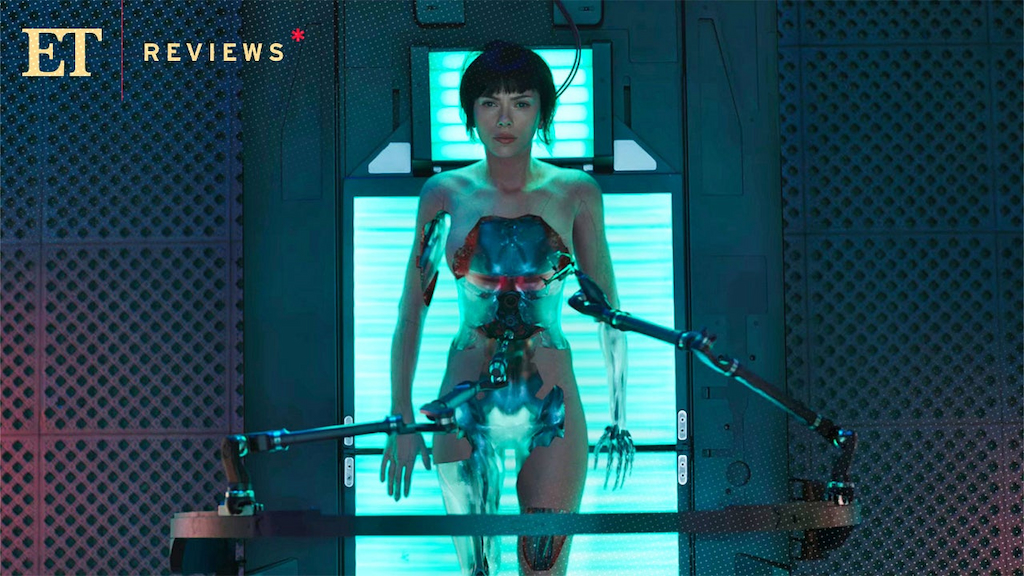Scarlett Johansson stars as a cyborg in the controversial reboot of the 1995 Japanese anime.
As far as fresh ideas go, Ghost in the Shell is pretty much the de rigueur A.I. story: a cyborg conflicted about her very cybernetics must question everything she know, including the shady corporation that created her. (The latter isn't a spoiler; it's in the trailer.)
The corporation here is Hanka Industries, which exists in a far-flung future where humans regularly enhance themselves with cybernetics and where human souls (or ghosts) can be put into synthetic bodies (or shells). Such is the case for Major (Scarlett Johansson), whose brain, we're told, survived an accident her body could not so "she" was transplanted into a new one, trained to become a living weapon and enlisted to work for government counter-terrorism cell Section 9.
If the ghost of the movie isn't all that new -- it was certainly more revolutionary when the original anime movie came out in 1995, itself based on a Japanese manga anthology from '89 -- the shell of this 2017 take is shiny enough to at least partially distract you. Director Rupert Sanders (Snow White and the Hunstman) creates a beautiful and strange neon-lit nightmare of a dystopian world, so detailed and intriguing that as the agents of Section 9 roamed the streets, I often found myself thinking that the camera could abandon them at any point to follow someone else -- a random pedestrian, a stray dog -- and I'd have been cool with it.
There's plenty more that's cool, too: the geisha bots (heavily featured in advertisements for the movie and exactly as fun as expected) and the action sequences that blur the line between film and anime and video game. (It's a shame Ghost in the Shell feels like it ran out of budget by the ending, exchanging stylized fight scenes for a clunky spider tank and devolving into a clusterf**k of indistinguishable gunfire, as blockbusters these days are wont to do.)
Johansson herself is great, playing Major one step removed, a bit blank and slightly robotic, with an authoritarian lumber to her. It would be insensitive, if not downright irresponsible, not to address the whitewashing controversy surrounding her casting, though. Sanders has claimed that casting a movie star like Johansson allowed him to assemble an "international" cast around her (including "Beat" Takeshi Kitano), but there are overall probably too many white people to brag about some pan-racial (but still overwhelmingly Asiatic) world.
Now I'm going to get into some major (Major) spoilers. (And here's your official, bolded spoiler warning, although perhaps I'm not ruining much if you've seen the original.) That controversy will only get more convoluted upon learning the twist of the movie: that Major actually was a young Japanese girl, Motoko Kusanagi, before her consciousness was forced into a white woman's body (Johansson's). Sanders and his movie aren't too clear on whether this is meant to be sort of ironic commentary -- that this is what the studio behind this very film did by appropriating a Japanese story and presenting it with a Caucasian face. Maybe Ghost in the Shell got lucky that interpretation is even viable, because the alternative -- that a Japanese revolutionary was "upgraded" into a Caucasian body -- is so much worse.
